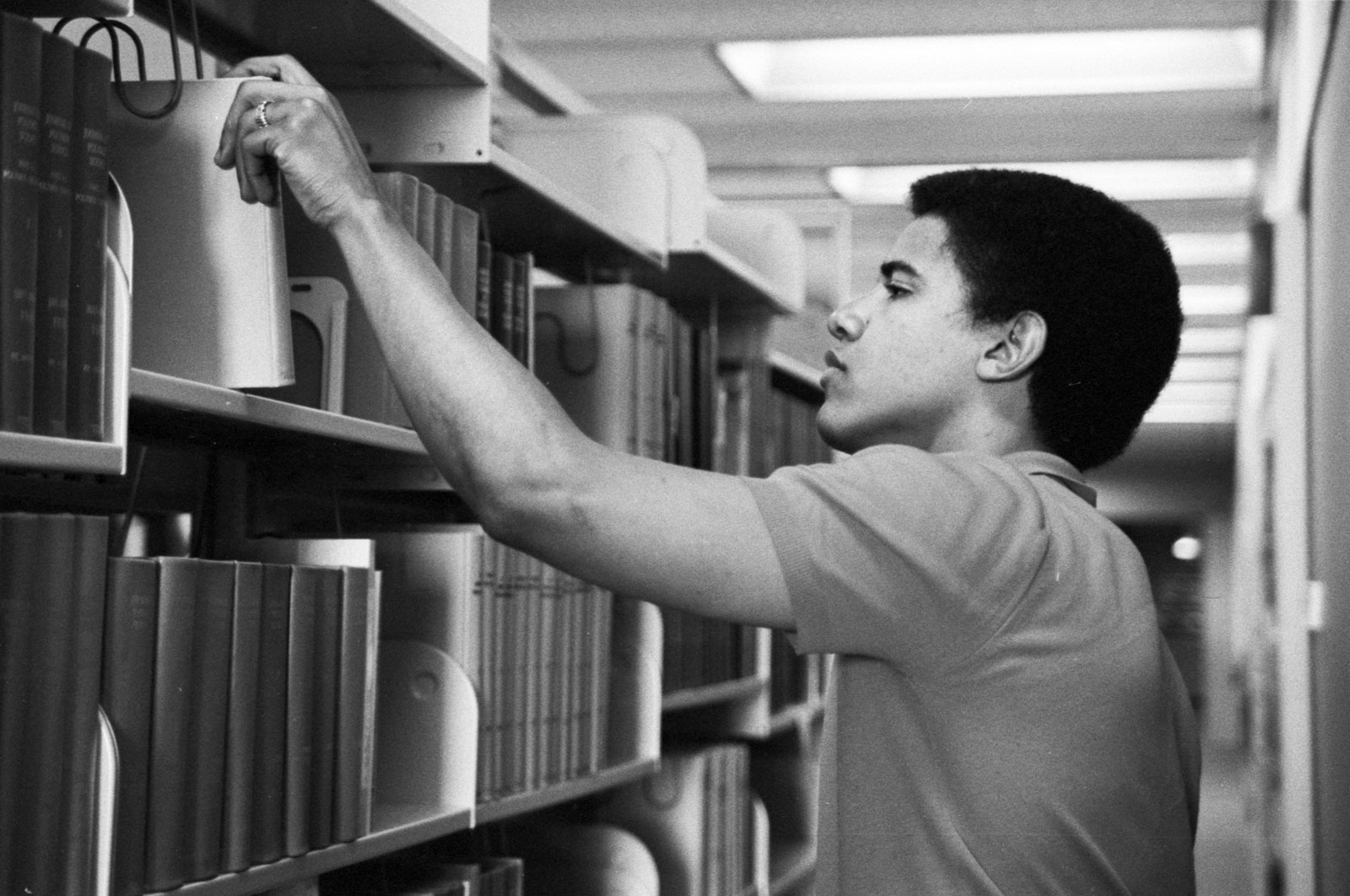Recently, while writing an essay on T.S. Eliot for The New York Review, I read or reread the work of many earlier critics, and was impressed most by two of them. One was Frank Kermode, who was ninety when he wrote, in 2010, one of his greatest essays, “Eliot and the Shudder,” a breathtakingly wide-ranging and sharply-focused piece about Eliot’s unique response to the common experience of shuddering. The other was a twenty-two-year-old college senior named Barack Obama, who wrote about Eliot in a letter to his girlfriend, Alexandra McNear, when she had been assigned to write a paper on The Waste Land for a college course.
Obama’s letter appeared in a biography by David Maraniss, Barack Obama: The Story, published in 2012, and prompted dozens of comments, some praising, some condescending. What struck me on rereading it was that, hasty and elliptical as it was, it exemplified literary criticism—like Frank Kermode’s—at its best, and showed why it might be worth doing. It also pointed toward something unsettling about its author’s later career.
This is what the young Obama wrote to his friend, divided into paragraphs for easier reading on screen:
I haven’t read “The Waste Land” for a year, and I never did bother to check all the footnotes. But I will hazard these statements—Eliot contains the same ecstatic vision which runs from Münzer to Yeats. However, he retains a grounding in the social reality/order of his time.
Facing what he perceives as a choice between ecstatic chaos and lifeless mechanistic order, he accedes to maintaining a separation of asexual purity and brutal sexual reality. And he wears a stoical face before this. Read his essay on Tradition and the Individual Talent, as well as Four Quartets, when he’s less concerned with depicting moribund Europe, to catch a sense of what I speak.
Remember how I said there’s a certain kind of conservatism which I respect more than bourgeois liberalism—Eliot is of this type. Of course, the dichotomy he maintains is reactionary, but it’s due to a deep fatalism, not ignorance. (Counter him with Yeats or Pound, who, arising from the same milieu, opted to support Hitler and Mussolini.)
And this fatalism is born out of the relation between fertility and death, which I touched on in my last letter—life feeds on itself. A fatalism I share with the western tradition at times. You seem surprised at Eliot’s irreconcilable ambivalence; don’t you share this ambivalence yourself, Alex?
Obama begins with a strikingly suggestive insight into Eliot’s literary and religious tradition and his special relation to it: Eliot is one of a line of Protestant visionary and apocalyptic writers from Thomas Münzer (or Müntzer) in the sixteenth century to Yeats in the twentieth, but distinguishes himself by finding his apocalypse in the actual world, not in a visionary one. Obama then describes Eliot’s double impulse toward, on one hand, a visionary realm of “ecstatic chaos” together with “asexual purity,” and, on the other, the “lifeless mechanistic order” and “brutal sexual reality” of everyday existence. And he recognizes that Eliot accepts this double impulse as a tragic fate that he can never transcend or escape.
Obama sees that Eliot’s conservatism differs from that of fascist sympathizers who want to impose a new political hierarchy on real-world disorder. Eliot’s conservatism is instead a tragic, fatalistic vision of a world that cannot be reformed in the way that liberalism hopes to reform it; it is a fallen world that can never repair itself, but needs to be redeemed. Behind this insight into Eliot’s conservatism is Obama’s sense that the goal of partisan politics is not the success of one or another party or program, but the means by which private morality can be put into action in the public sphere. So the liberal Obama can respect the conservative Eliot, because both seek what are ultimately moral, not political, ends.
Eliot’s fatalism, which Obama shares “with the western tradition at times,” had its source, Obama continues, in Eliot’s sense that life requires death. The living fertility hoped for in The Waste Land must seek its own death in order that new life may arise; the seed must die. This is the point of the “Death by Water” section in The Waste Land and the lines in Four Quartets where the wedding dance leads inevitably to “dung and death.” And the fatalistic cycle of “birth, and copulation, and death” (Eliot’s words in Sweeney Agonistes) always contrasts with the undying perfection that The Waste Land glimpses briefly in “the heart of light, the silence.”
Obama asks his friend, “You seem surprised at Eliot’s irreconcilable ambivalence; don’t you share this ambivalence yourself, Alex?” Instead of isolating Eliot in some social, ethnic, or sexual category, instead of hearing in him the voice of political or ideological error, Obama finds a deep ambivalence that might be felt by anyone, just as Kermode sees Eliot’s “shudder” as a special case of something felt by everyone. And instead of making an assertion to his friend about her own ambivalence, Obama asks her a rhetorical question, because no one can be certain about someone else’s inner life, though sympathy makes it possible to guess. Having first placed Eliot in his historical and literary context, then having pointed to what is unique in him, Obama ends by showing how he speaks to any individual reader who pauses to listen. This is what the finest literary criticism has always done.
Advertisement
Like everyone, I imagine, who was moved and hopeful after the 2008 elections, I have mixed feelings about Barack Obama’s presidency, and I doubt that “a fatalism I share with the western tradition” is desirable in a practical politician. To be fatalistic is to believe that nothing can be fixed, that the best anyone can do about the miseries of the world is to talk about them, eloquently, while hoping for the world to be redeemed.



